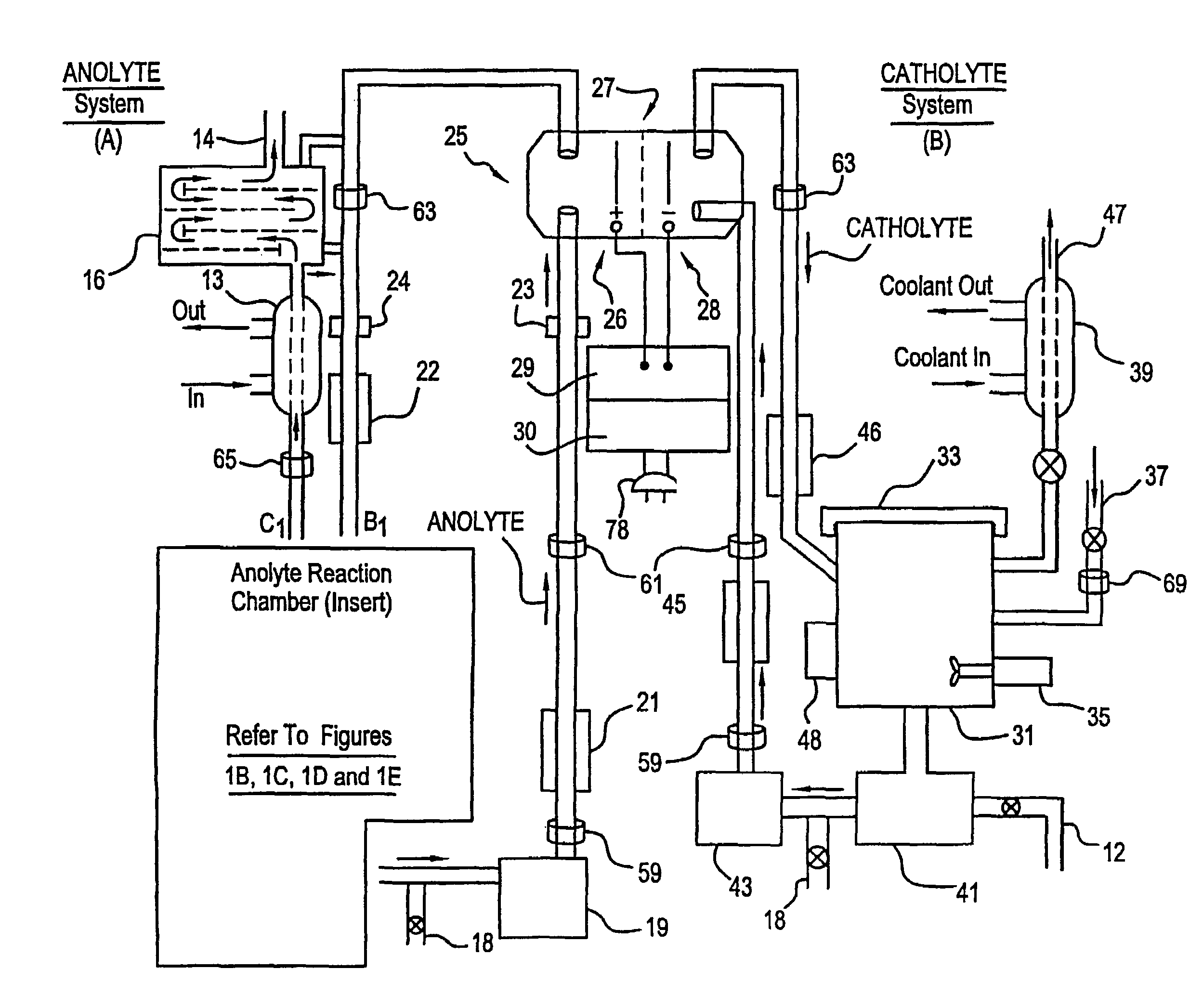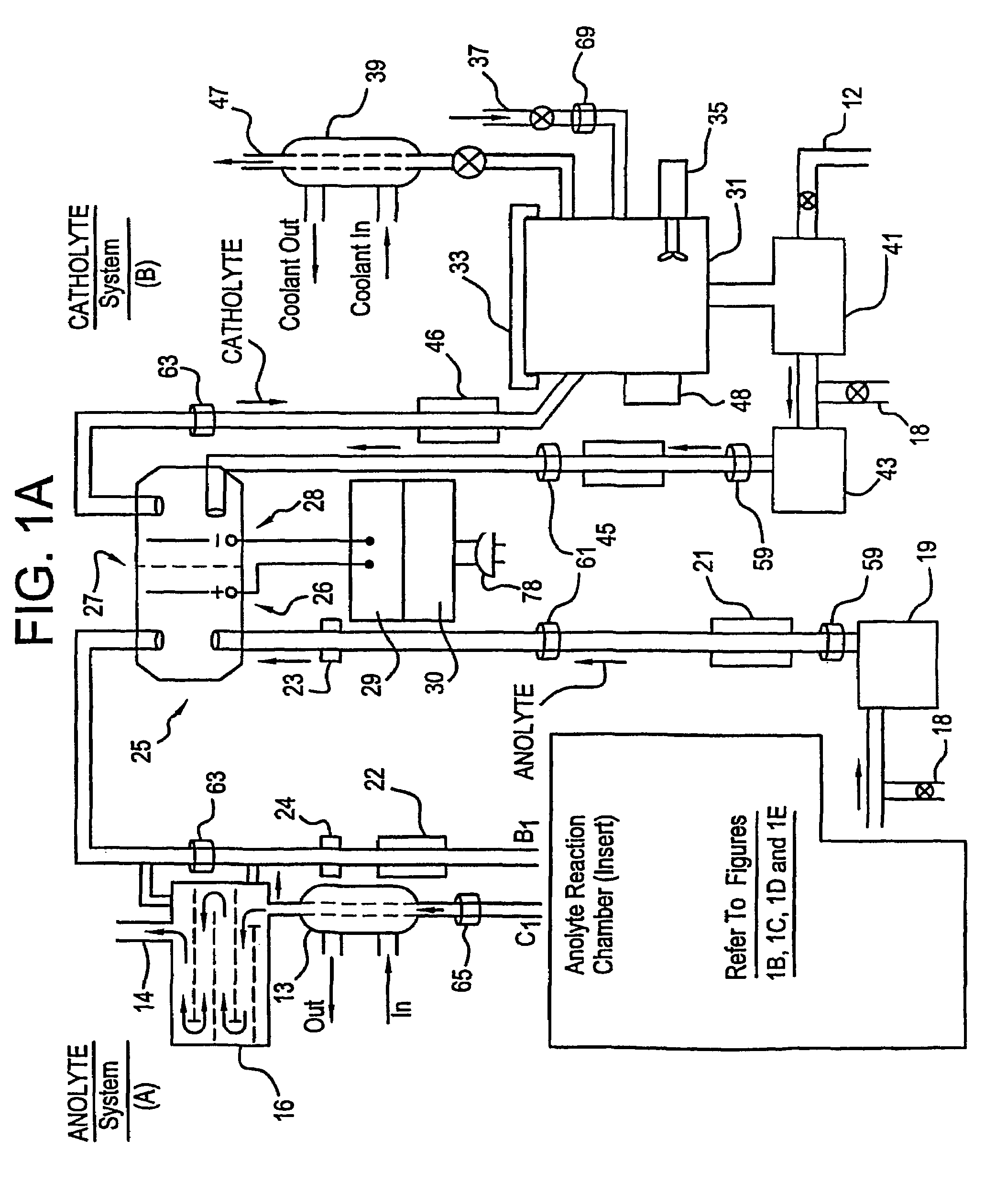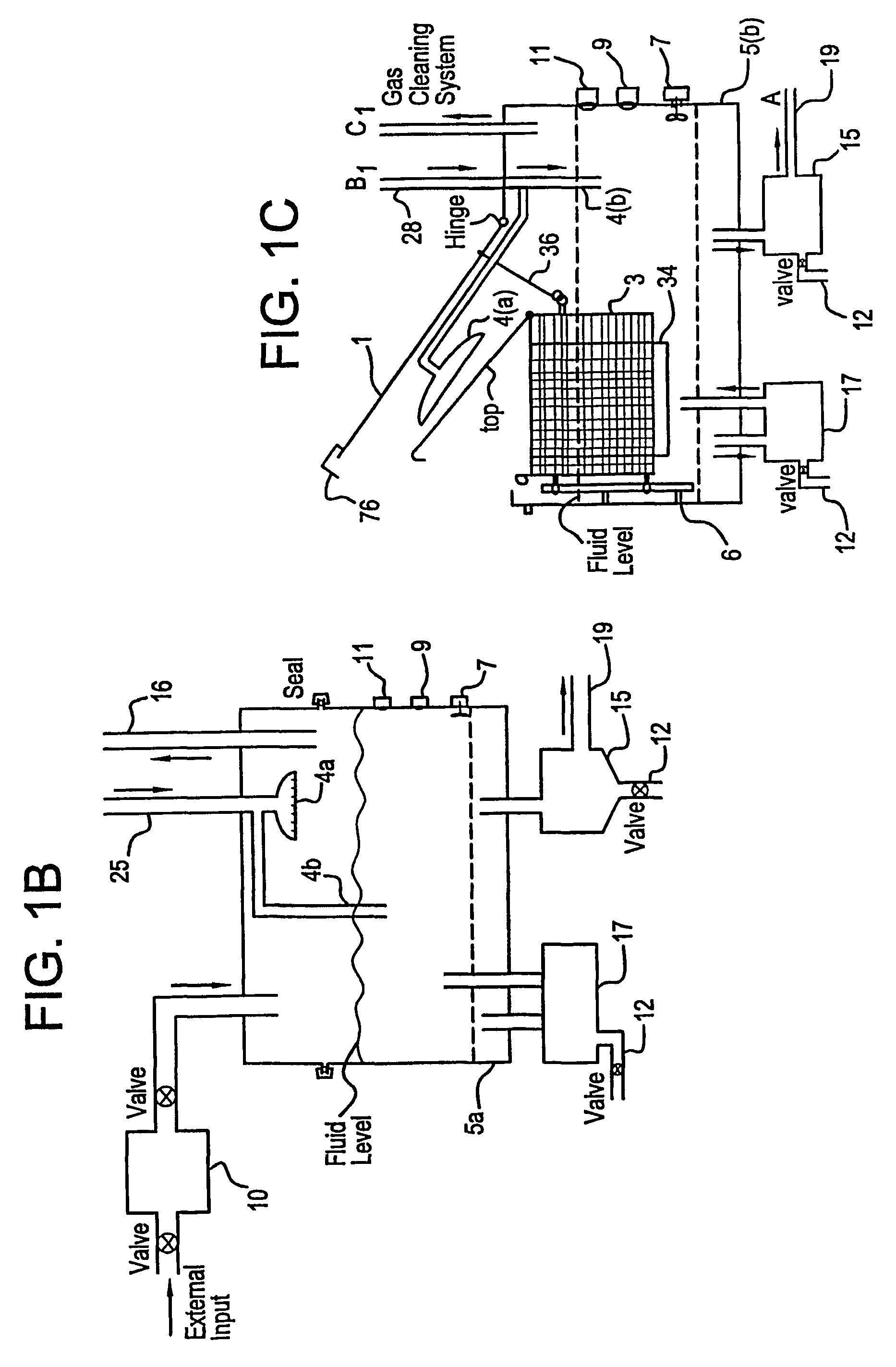Mediated electrochemical oxidation of organic waste materials
a technology of organic waste and electrochemical oxidation, which is applied in the direction of electrochemical methods for separation processes, manufacturing tools, water/sewage treatment, etc., can solve the problems of increasing the capital cost of equipment required, increasing the burden on organic waste generated by a large segment of our industrial sector, and increasing the burden on these companies as well as the whole country, so as to improve the destruction rate of non-anolyte soluble organic waste, improve the access to oxidizers, and save energy
- Summary
- Abstract
- Description
- Claims
- Application Information
AI Technical Summary
Benefits of technology
Problems solved by technology
Method used
Image
Examples
examples
[0149]The following examples illustrate the application of the process and the apparatus.
Example (1)
Destruction of Organic Compounds
[0150]The following organic products have been destroyed in the MEO System Apparatus: ethylene glycol, benzoic acid, sodium benzoate, butyric acid, valeric acid, hexanoic acid, phenol, propionic acid, and acetic acid (CH3COOH). The destruction results were as described in the previous sections on the MEO process.
Example (2)
Efficient and Environmentally Safe Products
[0151]The MEO process produces CO2, water, and trace inorganic salts all of which are considered benign for introduction into the environment by regulatory agencies. The cost of using the MEO process in this invention is competitive with both the incineration and landfill methodologies. The MEO process is uniquely suited for destruction of organic waste because water, which constitutes a major portion of this waste (e.g., tissue, bodies fluids, etc.) is either benign or actually a source of s...
example
(8)
System By-Products are Safe
[0157]The system flexibility provides for the introduction of more then one mediator ion resulting in marked improvement in the efficiency of the electrolyte. Furthermore, the wide choice of mediators listed in Table I or available as POMs, and electrolytes in this patent, desensitizes the system to the formation of participates in solution (i.e. allows increased ease in preventing formation of unstable oxy compounds).
[0158]While the invention has been described with reference to specific embodiments, modifications and variations of the invention may be constructed without departing from the scope of the invention, which is defined in the following characteristics and features.
[0159]The invention provides the following new characteristics and features:[0160]1. A process for treating and oxidizing organic waste materials comprising disposing an electrolyte in an electrochemical cell, separating the electrolyte into an anolyte portion and a catholyte port...
PUM
 Login to View More
Login to View More Abstract
Description
Claims
Application Information
 Login to View More
Login to View More - R&D
- Intellectual Property
- Life Sciences
- Materials
- Tech Scout
- Unparalleled Data Quality
- Higher Quality Content
- 60% Fewer Hallucinations
Browse by: Latest US Patents, China's latest patents, Technical Efficacy Thesaurus, Application Domain, Technology Topic, Popular Technical Reports.
© 2025 PatSnap. All rights reserved.Legal|Privacy policy|Modern Slavery Act Transparency Statement|Sitemap|About US| Contact US: help@patsnap.com



